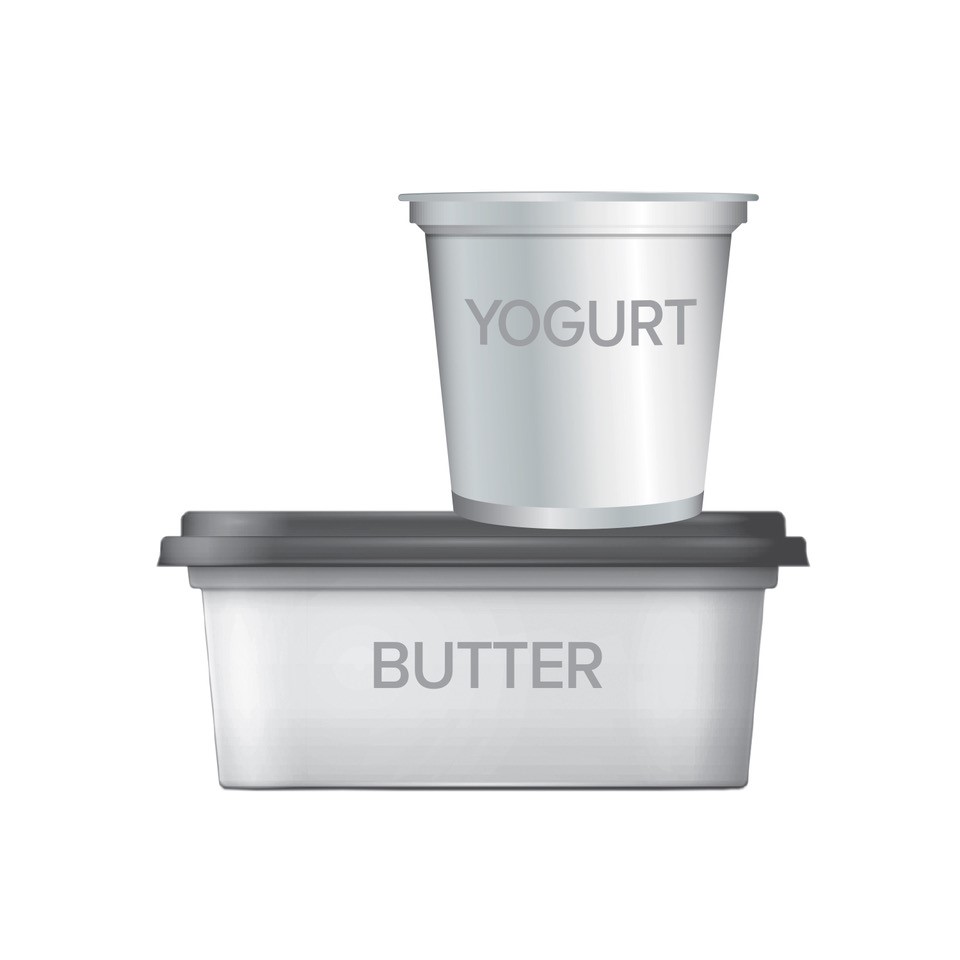
Plastic Tubs
Depending on your recycling processor, some communities can recycle plastic tubs (butter, sour cream, yogurt cups). Tubs should be empty, clean and dry.
As of January 2021, some local recycling processors are accepting plastic tubs for recycling.
What is a plastic tub?
A plastic tub is an open-top circular, oblong, or square container. It may have an unattached snap-on lid or cover. Examples of plastic tubs are butter, sour cream, cottage cheese, dairy or whipped topping, clear deli tubs, or fruit and yogurt cups.
Tubs must be empty, clean, and dry. Replace the cap or lid, if available, then recycle.
Which recycling processors can accept plastic tubs?
Republic Services, Rumpke Waste & Recycling, and Waste Management accept plastic tubs for recycling in Cuyahoga County. See Rumpke's fact sheet about adding tubs to recycling.
At this time, Kimble Companies does not accept plastic tubs for recycling.
Find out which recycling processor serves your community by allowing location services or using the green ‘Select a City’ drop-down at the top of every page and clicking ‘See Details.’
What about other plastics? Can all plastics be recycled?
In Cuyahoga County, all communities can include plastic bottles or jugs in curbside recycling. The container should have a “neck” and have a diameter of 2" or more. Plastic bottles and jugs must be empty, clean, and dry. Drain excess fluid, replace the cap then recycle. See more about plastic bottles and jugs.
Some communities can include clear plastic clamshells and plastic to-go cups in recycling. See details about managing other plastic.
Why is recycling plastic so challenging?
There is an abundance of plastic packaging in our society today. Currently, about 9% of it can be recycled. This is due to limited markets for recycled plastic - not all manufacturers produce packaging from recycled plastic - and the complexities of sorting, processing, and recycling the various kinds of plastic.
Plastic is a synthetic (man-made) material. Most plastic material is a derivative of crude oil and natural gas, which are non-renewable resources. Plastic products are often a polymer resin mixed with a blend of additives.
Plastic products are created through thermoforming and blow molding. Earth911 explains the differences between the processes including how they are chemically different and melt at different temperatures, and how that affects recyclability.
Most plastic placed in curbside recycling bins is downcycled. This means it is turned into lower-quality products such as fibers for clothing, carpeting, polyfill in pillows, winter coats, and other goods. Only a small percentage is recycled into new bottles and containers. Read more about downcycling.
NPR published a project in 2019 that helps explain plastics recycling.
What are our alternatives?
We can choose to reduce our consumption of single-use plastic. Small changes add less plastic waste to our landfills and our environment. Consider these ideas for reducing waste.
Until there is a major shift in the demand for recycled plastic and more sensible packaging design, consumers are limited in our recycling options.
---
Looking to recycle, donate, or dispose of other items? Use the dark blue 'What Do I Do With?' search bar at the top of every page of this website. Allow location services or use the city drop-down to find opportunities in your local area.
